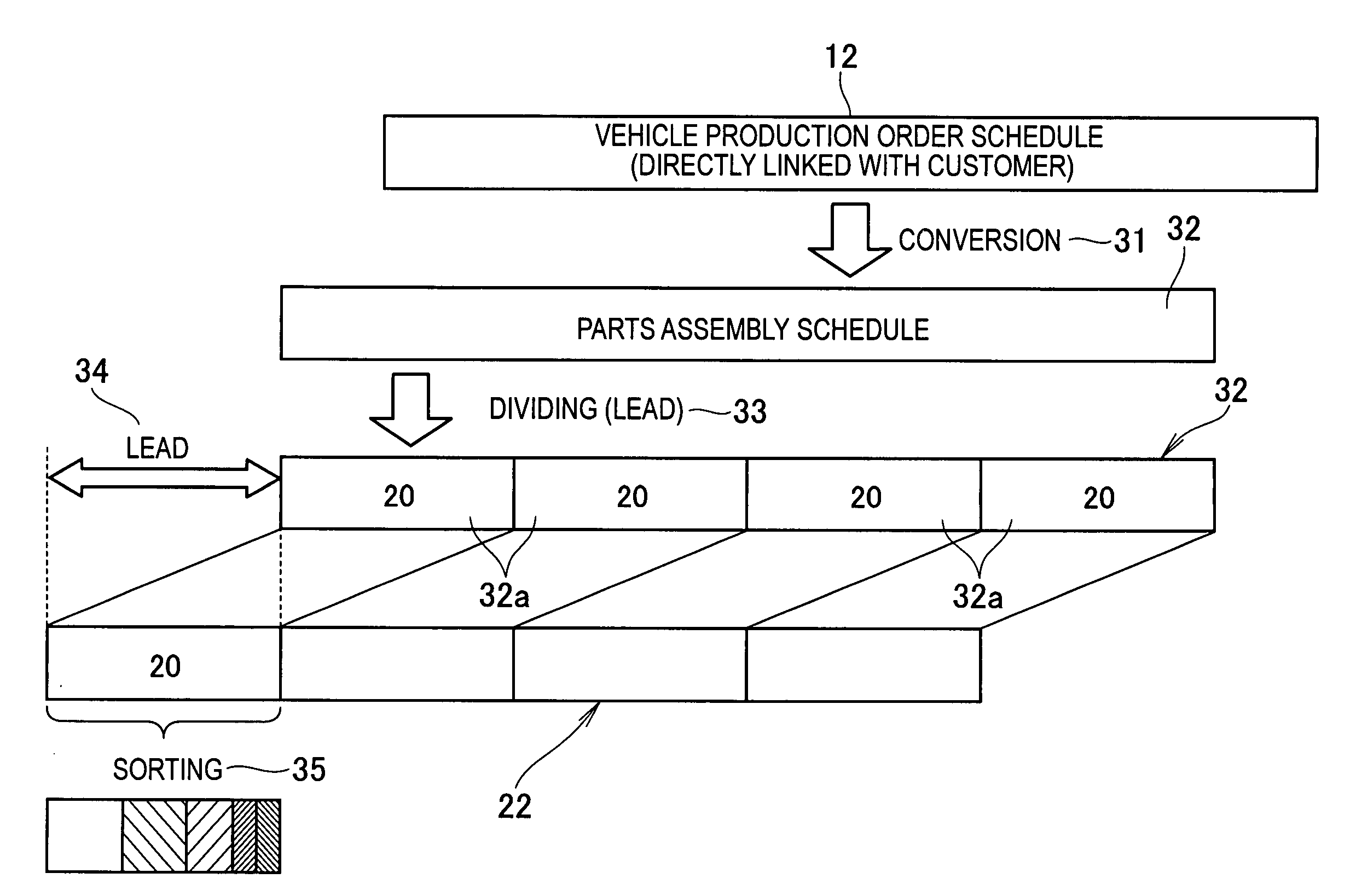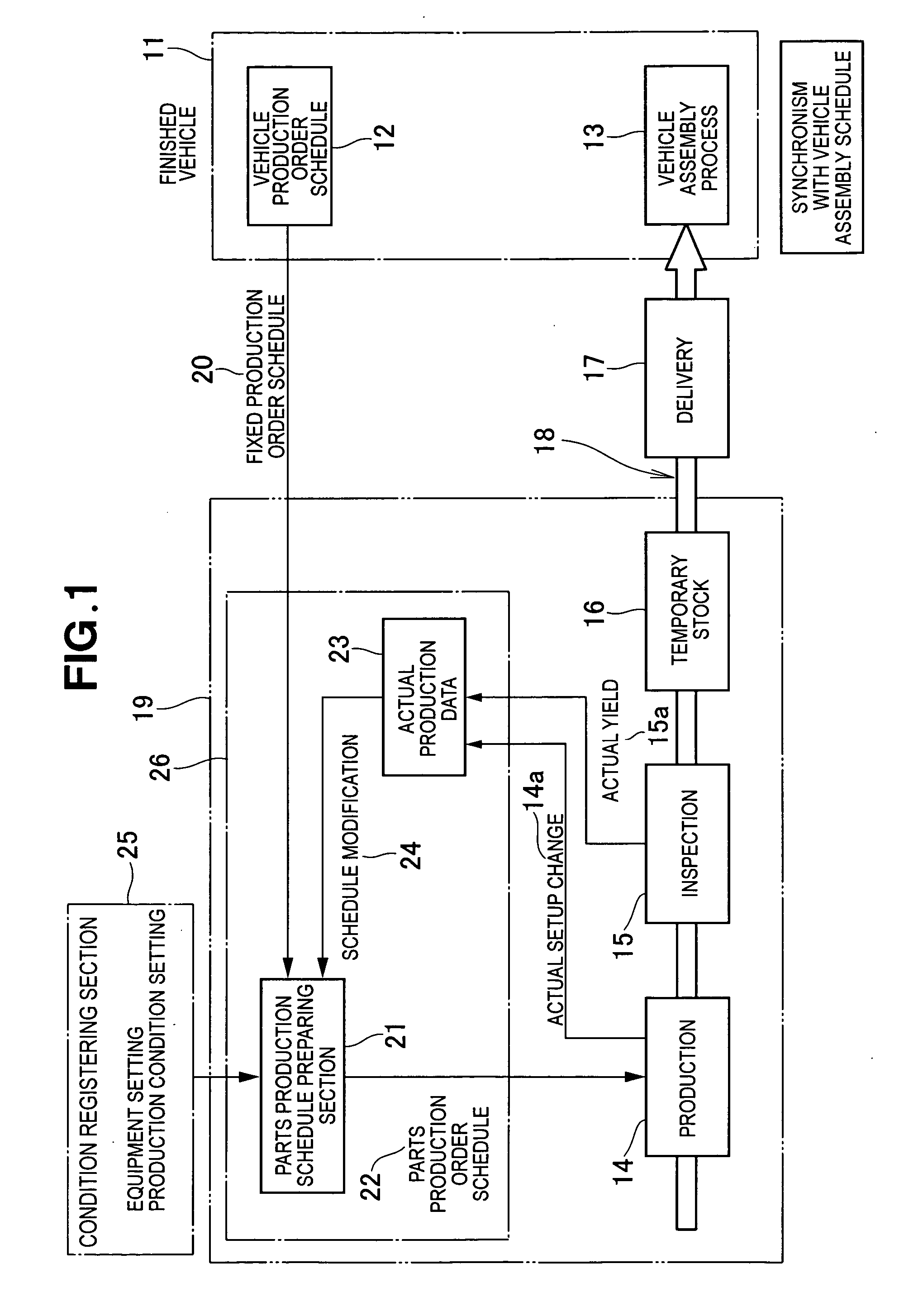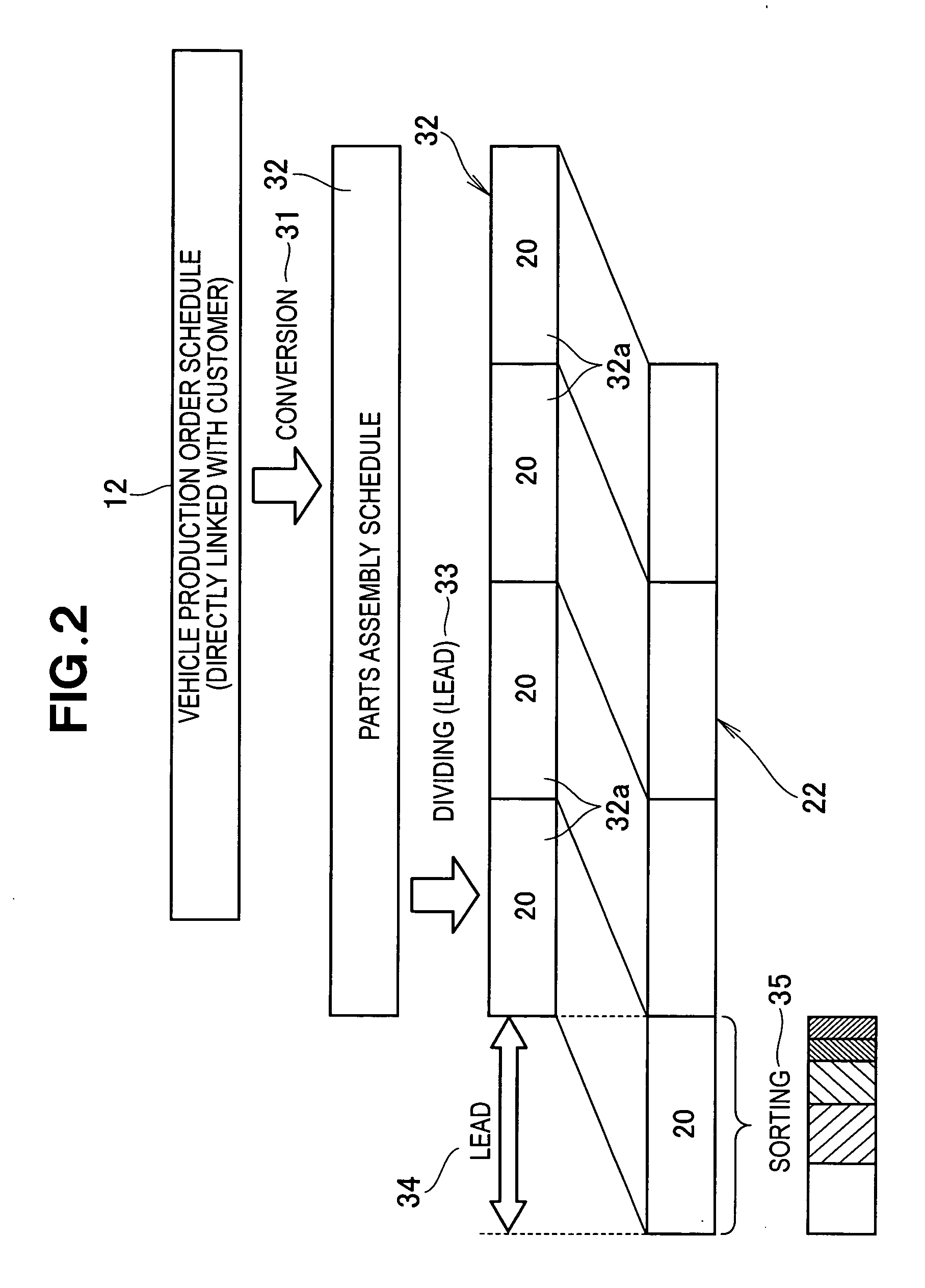Parts production scheduling method
a production scheduling and part technology, applied in the field of parts production scheduling methods, can solve the problems of long lead time of parts delivery, inability to complete the production of necessary parts in time, and inability to operate the “kanban” system in tim
- Summary
- Abstract
- Description
- Claims
- Application Information
AI Technical Summary
Benefits of technology
Problems solved by technology
Method used
Image
Examples
first embodiment
[0070] The first embodiment shown in FIG. 3 is advantageous in that only those parts, which are already scheduled for use in the products (finished vehicles), are produced and, hence, no extra stock is produced. On the other hand, a defect that may occur on the part production line would directly cause a parts shortage problem. To deal with this problem, actual production data 23 (FIG. 1) are collected for each type of parts so that the part production schedule for each parts type can be upwardly revised according to a percent defective of the parts of the relevant type.
[0071] In the case where the percent defective is 2.0% for the parts CA and 1.0% for the part CB, this means that 50 parts CA actually produced in one lot contain one defective part. Thus, to a first lot of 50 parts CA, one part is added and as for a total of 51 parts CA the part production schedule is prepared. In the event that all of the 51 parts CA has passed the inspection, one extra stock occurs and addition of...
second embodiment
[0074] The number of parts CA to be normally produced in zone N−1 is 5, which is equal to the number of type-A products to be produced in the next zone N. In the second embodiment, however, the part production schedule is prepared as involving parts replenishment effected at a rate of 1 / 50, which is determined by a percent defective of the parts CA recorded heretofore. Thus, one part is added to for production with five other parts in zone N−1. The parts produced in zone N−1 include one defective part and this causes a substantial increase in the percent defective of the parts CA. Such increase in the percent defective is provided as information (step 44 shown in FIG. 4) and reflected appropriately in the preparation of a parts production schedule to be executed in zone N+1 so that the prepared part production schedule involves parts replenishment to correct the percent defective f the parts CA.
[0075] According to the second embodiment of the inventive parts production scheduling me...
third embodiment
[0077] The number of parts CA to be normally produced in zone N−1 is 5, which is equal to the number of type-A products to be produced in the next zone N. In the third embodiment, however, the part production schedule is prepared as involving parts replenishment effected at a rate of 1 / 50, which is determined by a percent defective of the parts CA recorded heretofore. Thus, one part is added to for production with five other parts in zone N−1. All the produced parts CA including one added for replenishment in zone N−1 are non-defective. As a consequence, when assembly in zone N using the parts CA produced in zone N−1 have completed at 9:10, one part still remains unassembled. Accordingly, if the parts production schedule involving parts replenishment based on an estimated percent defective is further continued, an increased amount of extra parts stocks will be produced. To avoid this problem from occurring, the part production schedule involving parts replenishment is canceled in th...
PUM
 Login to View More
Login to View More Abstract
Description
Claims
Application Information
 Login to View More
Login to View More - R&D
- Intellectual Property
- Life Sciences
- Materials
- Tech Scout
- Unparalleled Data Quality
- Higher Quality Content
- 60% Fewer Hallucinations
Browse by: Latest US Patents, China's latest patents, Technical Efficacy Thesaurus, Application Domain, Technology Topic, Popular Technical Reports.
© 2025 PatSnap. All rights reserved.Legal|Privacy policy|Modern Slavery Act Transparency Statement|Sitemap|About US| Contact US: help@patsnap.com



